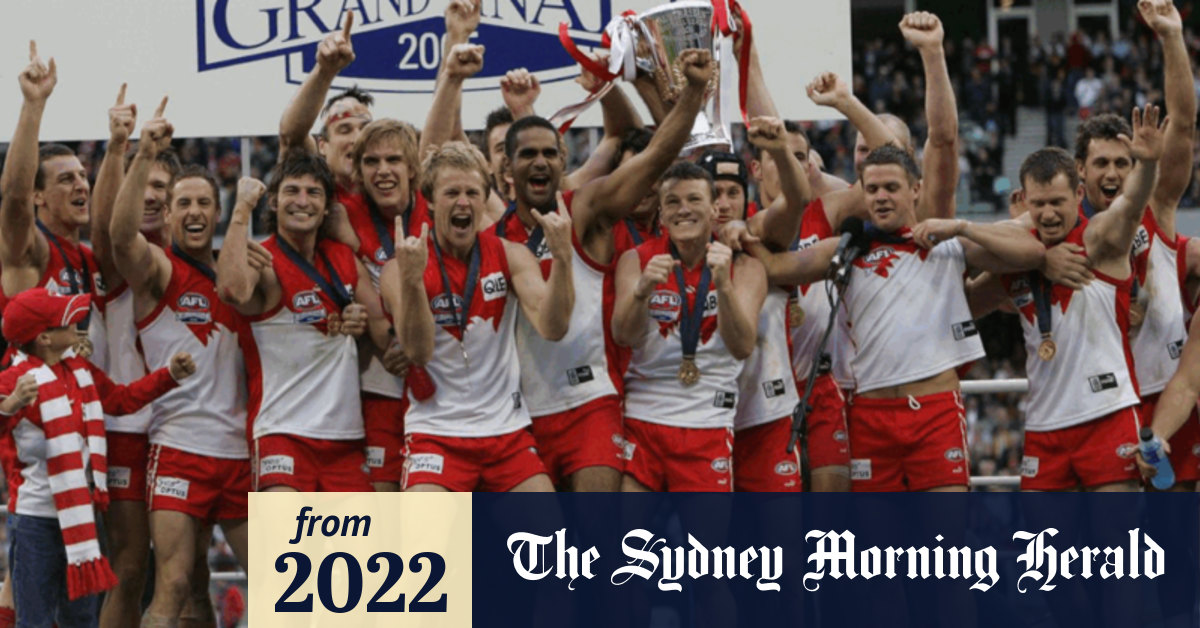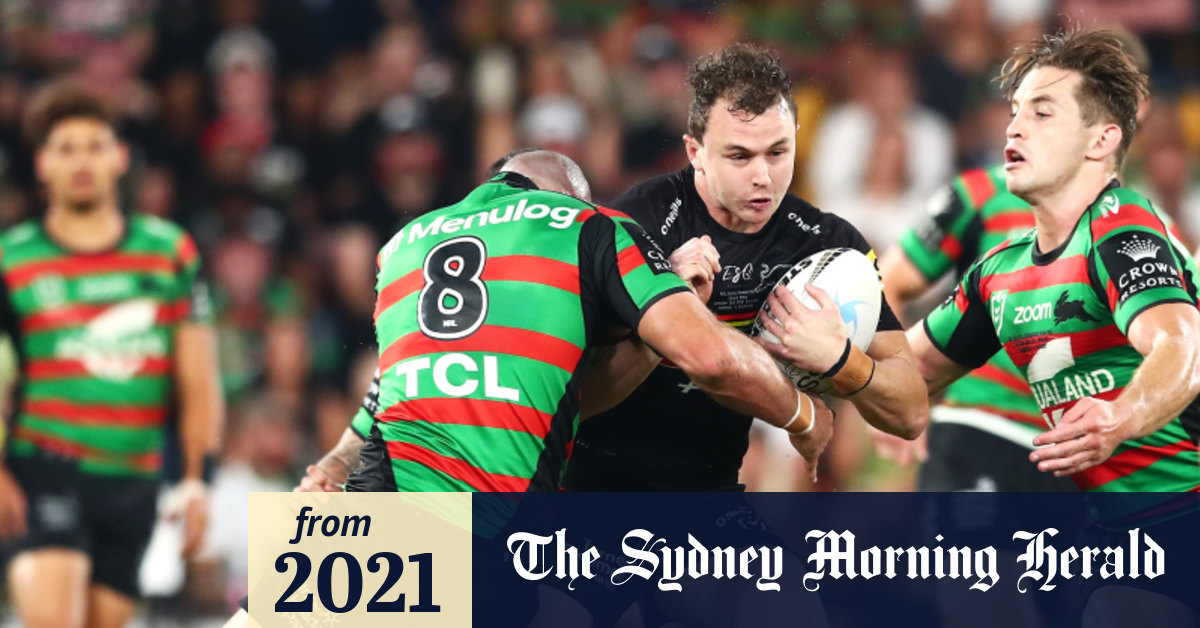Copied & pasted for you PR.
This is a very pro Swans article written in the middle of GF hype here but there is truth in it with problems facing the game. Interesting that Swans have a big following in Nth Sydney and the inner west where both districts lost their footy clubs.
Rugby league will always be the biggest game in town, but the Swans are easily the city’s biggest sporting team. If you peel back the layers, there are some powerful dynamics at play.

www.smh.com.au
How the Swans became Sydney’s biggest footy team - and why they’ll only get bigger
Dane Rampe grew up in Sydney’s eastern suburbs, and so has watched the slow and steady rise of the Swans unfold from close quarters. But even he is occasionally shocked at the extent to which certain parts of the city have come to embrace them.
“You have people kind of recognise you, looking at you a little bit more ... I’m thinking, ‘f---, have I double-parked you in or something? What are you looking at me for?’” the Swans key defender said, laughing.
“And they’re like, ‘Oh mate, just wanted to say good luck this year’, or, ‘Well done on the weekend
“It’s still foreign, but I reckon after COVID it’s probably galvanised the city. Everyone’s tuned in a little bit more. It’s probably that cherry on top, for the work that’s been done over the last five to 10 years, because the game is in a really healthy spot up here.”
Most Swans players have similar stories.
Callum Mills was cheered out of a cafe when he dropped in for a pre-game coffee last weekend. “I couldn’t stop laughing. I was like, what is going on? This isn’t Sydney,” he told the ABC. “You go to the beach and there’s Swans hats everywhere. It’s awesome to see the city behind us.”
Their former teammate, Kieren Jack, can feel that a new generation in and around the club’s Paddington base has latched onto the red and white. One ex-Swans employee described this well-heeled cohort of young professionals as the “Merivale set” – the sort of people who regularly populate hospitality baron Justin Hemmes’ flashy pubs, bars and restaurants, and for whom the SCG is not just a place to see the Swans play, but a place to be seen.
With respect to Rampe and Mills – two of the Swans three co-captains this season, both born-and-bred Sydneysiders – footy’s really not so foreign any more. This is Sydney. At least in the east, the north, and the inner west, and probably other pockets soon.
https://www.smh.com.au/sport/afl/a-...-on-merch-spending-spree-20220922-p5bk6u.html
Rugby league will always be the biggest game in town, but the Swans are easily the city’s biggest sporting team. If you peel back the layers, as the club readies for its fourth AFL grand final in 10 years, and look at the reasons why, there are some powerful dynamics at play.
Sydney’s current membership base is a whopping 55,394, again outstripping their nearest NRL rival. Roy Morgan’s annual AFL fan survey, despite how rubbery the science behind its figures might be, estimates the full size of the broader Bloods bandwagon is more than 1 million – making them the most-supported club in the AFL, which they have been every year since their drought-breaking 2005 flag.
“One thing that really hit home to me was in round 22 against Collingwood,” said former Swans chairman Richard Colless, who served between 1993 and 2014 – the start of their golden era on and off the field.
“For the first time it dawned on me that a lot of people weren’t just sports lovers coming to a big game. There were actually rusted-on Swans fans everywhere you looked. People had caps, scarves, jumpers – and this is kids and women and men and older people, and so on and so forth.
https://www.smh.com.au/sport/afl/gr...l-fair-weather-swans-fan-20220921-p5bk0u.html
“It was a lightbulb moment, that people have progressed from being more genteel, distant supporters, to being the real McCoy. The standard joke out of Victoria used to be that [Swans fans] cheer in the wrong places, and it was really quite condescending.
“I’m not saying it’s dangerous to go to some venues, but we’re probably the least ‘feral’ – but that shouldn’t in any way infer that the people watching the game are any less passionate.”
The Swans are a model organisation in every way. Colless is just one of two chairmen, along with incumbent Andrew Pridham, they’ve had in almost 30 years. They’ve had only two chief executives in the past 13 years, and their current one, Tom Harley, is so widely respected he is being considered to
replace Gillon McLachlan at the helm of the AFL.
They’ve had three coaches in the past 26 years, perfecting the art of succession planning in a way few other clubs have managed. Their major corporate backer, QBE, renewed its deal this year for a further five years, which will take one of the longest-running partnerships in Australian sport to four full decades.
They have missed finals football just five times since 1996. And the club’s academy program – much to the chagrin of those south of the border, who see it as an unfair advantage instead of a scheme designed to combat the go-home factor with interstate draftees – is pumping out not only homegrown talents like Mills,
Isaac Heeney and
Errol Gulden, but hundreds of others who don’t make the top level, yet still go on to strengthen grassroots leagues with their superior skills, understanding and stronger bond with the game.
They are now reaping what Dr Hunter Fujak, a lecturer in sports management at Deakin University and the author of Code Wars: The Battle for Fans, Dollars and Survival, describes as the “generational dividends” of the strategic investments the club and the AFL have made in NSW.
For example, imagine an eight-year-old boy was enrolled into Auskick the year after “Plugger’s Point” in the 1996 preliminary final –
widely considered the moment when the city truly accepted the Swans, who were transplanted here as struggling VFL club South Melbourne in 1982. That boy would now be a man in his mid-30s, to whom Aussie rules is not a foreign code at all, but the one he was raised on, and who sees the Swans as an intrinsically Sydney team, not a relocated franchise. He’d probably have a high level of disposable income, and perhaps a young family to indoctrinate as well. While the Swans generally don’t rate anywhere near as well as NRL games on television in Sydney, almost every match they’ve played in recent memory has been on free-to-air.
“Every single week, the Swans are getting [a broadcast reach of] 90,000 people tuning in for some component of the game, times 22 games a year, times 20 years,” Fujak said. “You’re basically investing into that fundamental exposure in this club in Sydney ... that is only possible because the AFL, as a central organisation, have always been so strategic about wanting to promote northern expansion in a way that other codes haven’t been anywhere near.”
Fujak contends Sydney’s territorial gains are also the product of good timing and misfortune from other codes, which helps explain why the Swans and the sport are so popular in the northern and eastern suburbs. All but five of the past 22 premierships won in the local Sydney AFL competition were claimed by clubs from those regions – and the others by the
Pennant Hills Demons, a unique footy oasis on the fringe of the western suburbs and north shore.
One part is rugby union’s loss of primacy within Australian sport
and in particular the private school system, where AFL has grown rapidly. Another is the Super League war, which fractured rugby league as the Swans began their period of sustained on-field success – offering any jilted fans a tempting alternative, backed by what Colless said was a “clarity of purpose” provided by the club’s stability and the AFL’s foresight.
For his book, Fujak caught up with journalist Peter Lewis, who in 1997 wrote The Convert, an account of how the Super League fiasco pushed him from being a North Sydney Bears tragic to following the Swans, to see if his sporting habits had shifted. They hadn’t.
“Twenty-five years later, he still has been a Swans member every year, he’s only been to three or four NRL games,” he said. “Every one of his kids plays AFL and none of them support an NRL team. When you look at the Super League war, yes, that’s well in the rearview mirror – but there’s this generational scarring or baggage, which the Swans have probably been able to capitalise from in terms of clawing over some disenfranchised people from that period, right as they started to strengthen.”
Anecdotally, many Bears fans appear to have made the same switch after they were squeezed from rugby league’s top table after 1999. Fujak argues that repeated off-field scandals involving NRL players have also turned off some followers, particularly women and white-collar workers.


